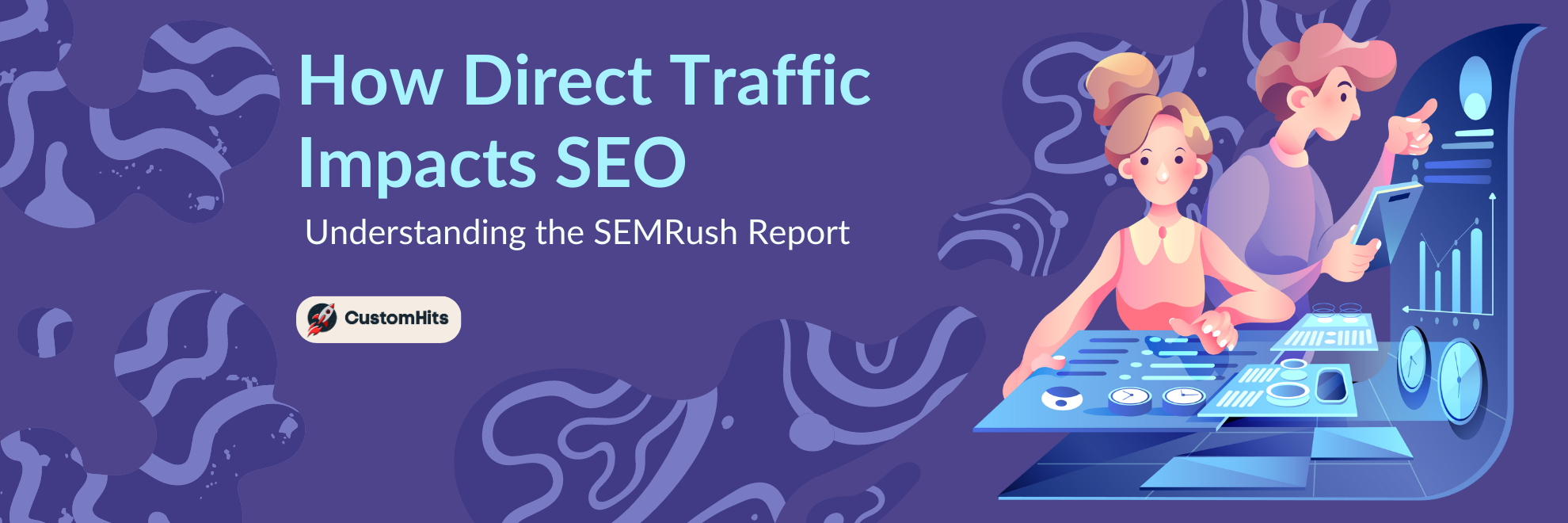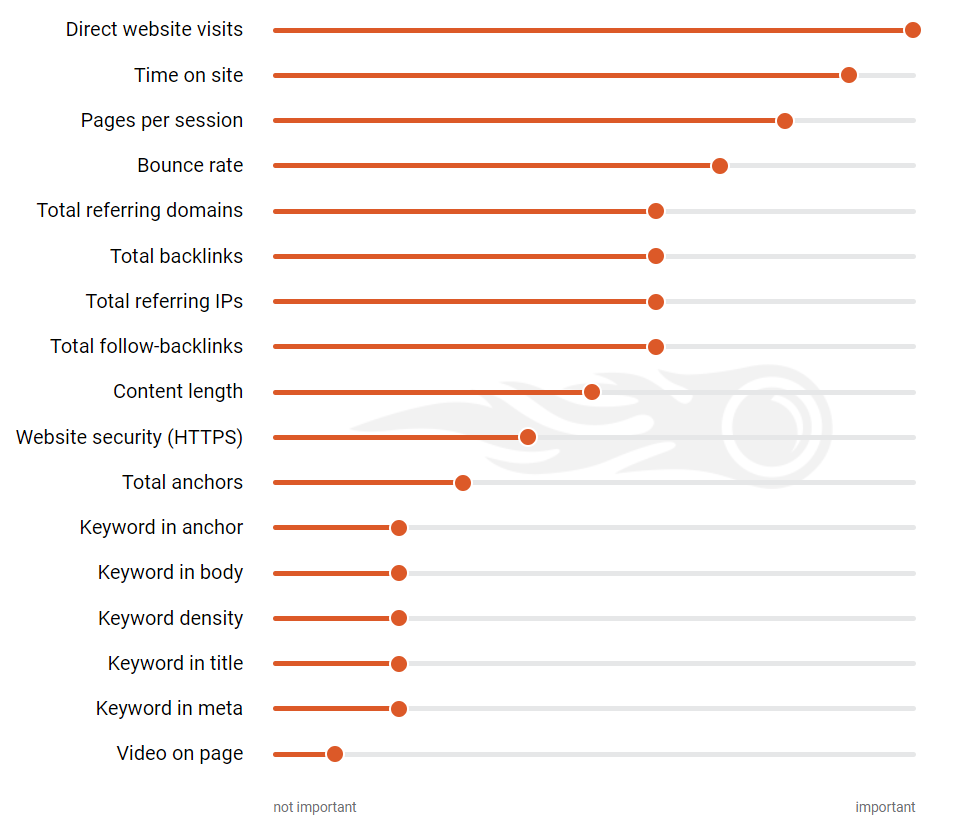

Overview
Content
Ranking Factors
There are 17 critical ranking factors highlighted in the latest SEMrush Ranking Factors report.

SEMRush Ranking Factors 2.0
By far the most influential are direct website visits and time spent on the site.
One thing is evident from this list: traffic is crucial to the success of your website. However, Google is more concerned with how consumers find your website and what they do there than with the quantifiable volume of traffic it receives.
Let’s examine how the top-ranking criteria impact your search engine optimization (SEO). We will then go through how you can use this information to raise your placements in search results.
Direct Traffic
If you’ve ever examined the stats for your website, you might have noticed that a significant portion of your visitors come from the mysterious “direct traffic.” Before we get into why direct traffic is so beneficial for your SEO let’s first understand the different traffic types:
- Organic: Traffic from search engine results that are earned, not paid
- Paid search: Traffic from a paid advert click in search engine results
- Referral: Traffic that occurs when a user finds you through a site other than a major search engine
- Social: Traffic from social networks, such as Facebook, Twitter, or Instagram
- Direct: Any traffic where the referrer or source is unknown
Direct traffic, consists of all visits to a website that does not have a referring page. Direct traffic has traditionally been associated with visitors that typed in your website’s address (URL) into their browser address bar or clicked on a saved link. However, the history of direct traffic in the modern era is more convoluted. Clients who manually key in the URL, regular customers, those who have bookmarked the site, those who access it through mobile devices, those who access it via a link in an application or piece of software, those who access your website through an email, and those who access it over an insecure HTTP connection are all examples of direct traffic.
Your ranking depends heavily on the direct traffic. According to the SEMrush analysis, despite the addition of five new ranking variables, direct website traffic remains the most crucial component. Thus, Google learns that a domain is highly valued and credible when it receives a large number of direct visits.
Send thousands of real human visitors directly to your website using CustomHits.
SEMrush came to the conclusion that while ranking the high-volume keyword category, Google gives higher priority to domains with greater authority and, consequently, more direct traffic. Given the significance of direct traffic, you should not simply be focusing on organic rankings. Promoting a positive brand image is important since it raises name recognition and, in turn, drives more customers to your site.
User Behaviour
More direct visitors won’t magically propel your site to the top of search engine results pages, either. You must have steady, consistent, high-quality traffic as well. Google carefully considers the indicators that your website satisfies a visitor’s search requirements. In fact, three of the top five ranking variables are based on user behaviour after they reach your site.
Time on Site
According to SEMrush, a visitor’s average time spent on a website is the second most important ranking criterion and the most influential user behaviour that is used. Do visitors spend time reading your content, or just click around your site for 30 seconds before leaving? Spending too little time on your site is a red flag to search engines, and tells Google that your content isn’t relevant to their search queries. Conversely, visitors that stay on your site for extended periods of time are clearly interested in what you have to say since they are reading extensively.
It’s important to optimize your site for both popular search terms and terms with a direct bearing on your content. You wouldn’t want your senior care facility’s website to come up first in a search for in-home caregivers, for instance.
